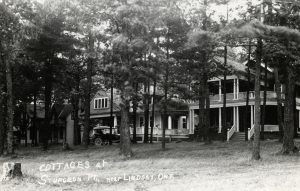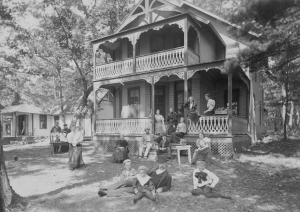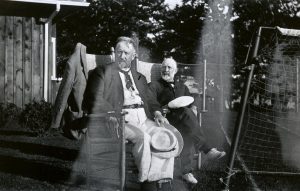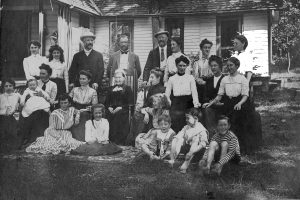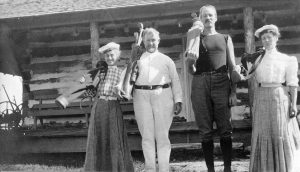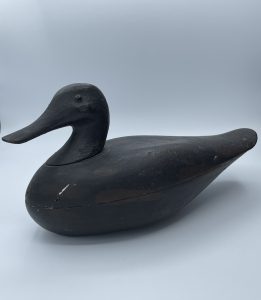Sturgeon Point
At Sturgeon Point, as one of the oldest cottage settlements in Ontario, William and J. D. Flavelle escaped their busy lives in Lindsay and found relaxation with family and friends. The Flavelle family secured land in 1888 and built multiple Queen Anne Revival-style cottages between 1st and 2nd Streets along Front Street.
In the summer months, these cottages were a place of many memories. A place where William and J. D.’s children and grandchildren could swim, sail and paddle on the river and oftentimes down to Chemong and Stoney Lakes during the annual Regatta. When ice would freeze over the river, the family would take a horse drawn sleigh up to the cottages.
After Sturgeon Point incorporated in 1899, J. D. was elected Reeve by acclamation, a position he held for 10 years and later would serve once more in 1916. When the Council first met in the years to follow, the main goal was to balance the budget and to never spend more than the receipts each year so as to not saddle any future residents with debts. Given this was a summer cottage community, this was an appropriate move made by the various councils, but this financial prudence did not mean limited services or improvements. A public park was created, improvements were made to the roads and driveways to each cottage, and the wharfs were upgraded.
By 1924, William made it one of his goals to bring electricity to the Point. Motivated by the dangers associated with oil lamps and the inadequate street lights, William opened discussions with the Fenelon Falls Power Commission to secure power for the summer months. A flat rate of $30 per horsepower and a total cost of just under $10,000 for transmission lines from Fenelon Falls, the Commission agreed to William’s proposal and cottagers were able to receive power between May and September each year. Of course, the luxury of warm water, power for cooking and for motors meant longer stays by cottagers so the Council went back to the Commission in 1930 to ask for extended power between April through December, which was granted. Many at the time credit William Flavelle with bringing power to the Point and without his dedication to the cause, it may not have happened when it did.
Sturgeon Point would continuously grow each year, eventually developing a golf course owned by J. D. who found pleasure not only in the sport of curling, but also golf. The love of this sport would carry over to his daughters, Amy and Edith, who would play the sport as long as they were able. Not only would family and other cottagers enjoy rounds of golf, but William’s children, Aird and Stuart, learned to duck hunt before taking many trips up north with friends for weekly duck hunting adventures.


